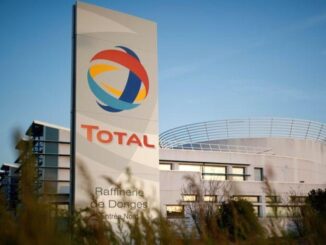
Adapting the French economy to climate change could cost between €5 billion and €20 billion a year by 2050, impacting buildings, road and rail transport and crop farming, according to estimates revealed by government-funded think tank I4CE, on Friday (5 April).
These estimates come ahead of the presentation of the third version of the National Plan for Adaptation to Global Warming (PNACC), expected “in a few weeks”, according to the staff of the Minister for Ecological Transition, Christophe Béchu.
Like the French government, the think tank assumes a warming trajectory of +2.7°C in 2050 and +4°C in 2100, compared with the pre-industrial era (1850-1900), based on a scenario with no acceleration in reducing greenhouse gas emissions.
Even assuming this precise emissions trajectory, the exact costs of climate adaptation in France are difficult to forecast, and estimates depend on many factors, including the distribution of costs between stakeholders, the choice of maintenance activities, and the preferred lifespan of infrastructures.
The report notes that it is preferable to proactively adapt before climate change impacts manifest themselves rather than waiting and reacting afterwards. However, I4CE acknowledges that even this approach will not prevent reactive repair costs from rising.
The cost of proactive action in buildings, transport and farming
France’s building stock must be modified to better handle anticipated heatwave risks, with an annual investment of €1 to €2.5 billion needed for new buildings and “several” billion euro a year for existing buildings. The report cautions that these costs are in addition to the sums already earmarked for energy renovation.
Roads and railways will need to be protected against heat-related warping and buckling, which could cost from “a few hundred” million euros to “a few” billion euros a year, in addition to the amounts already earmarked for adaptation, the report said.
Regarding plant agriculture, the cost of maintaining yields of France’s main plant crops will be around €1.5 billion annually, but the cost of more structural changes to agricultural models is “difficult to assess”, the report noted.
Repairing the damage
The costs of adaptation will inevitably include the costs of repair after climate-related damage has occurred. In 2023, French insurers already paid more than €6 billion for climate disaster-related claims.
On Tuesday (2 April), the government received a report on the insurability of climate risks. The cost of damage linked primarily to the climate could increase by around 50% by 2050 compared with today and the insurance sector must handle these risks, and public support may be necessary.
Béchu announced on Thursday (4 April) that he would set up a fund to compensate the growing number of people impacted by retreating coastlines, based on new coastline maps.
In France, there is already a fund, known as the “Barnier” fund, designed to finance preventative work to protect against natural disasters.
It is more difficult to quantify adaptation costs at the European level, as they are often very local and situation-specific. That is why the latest estimate range for public finances is between €35 billion and €500 billion annually between now and 2050.
The EU did unveil a strategy in 2021. But according to Béchu, the word “adaptation” “is not a term that the Commission has yet taken up”, he told Euractiv in August 2023.
Currently, the EU and the member states are not doing enough to adapt to climate change, according to the European Environment Agency.
But given its importance, “I’d be surprised if it wasn’t a subject that came up, either during the European elections or just beyond, in the Commission’s new agenda for the coming years”, concluded Béchu in August.



